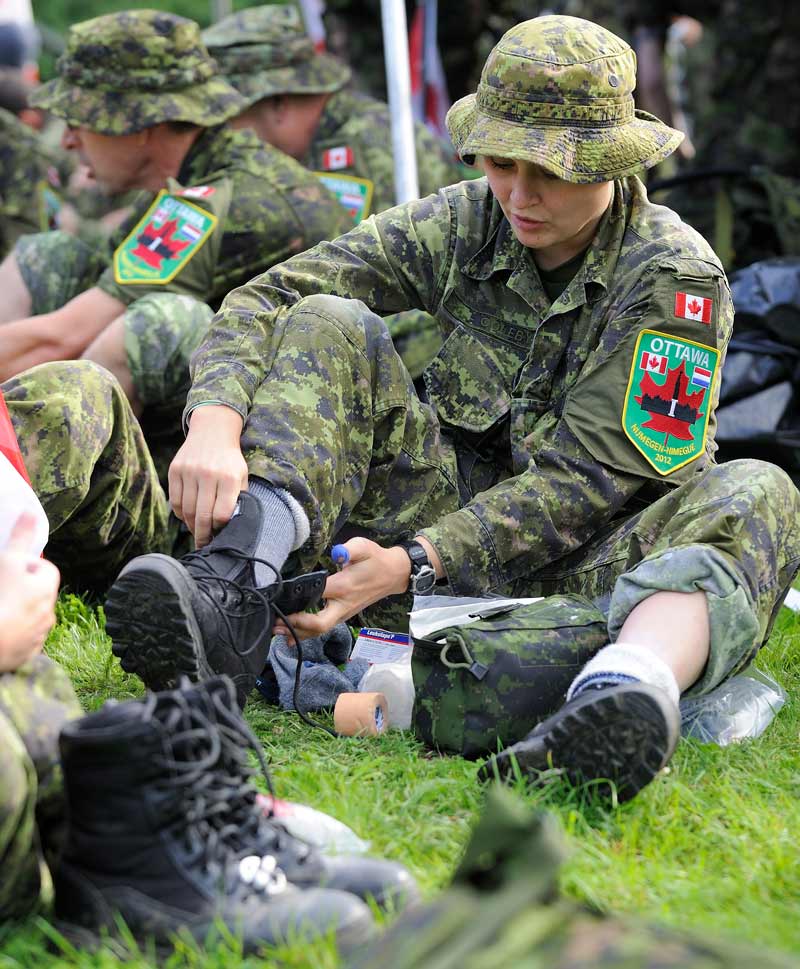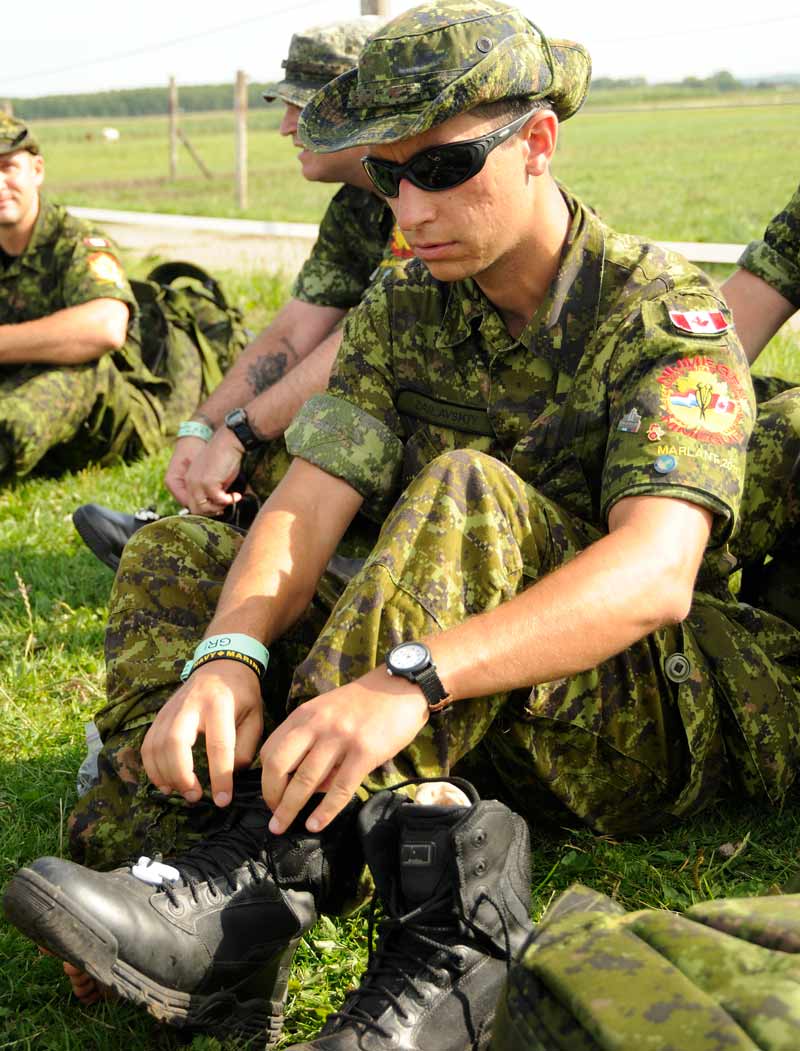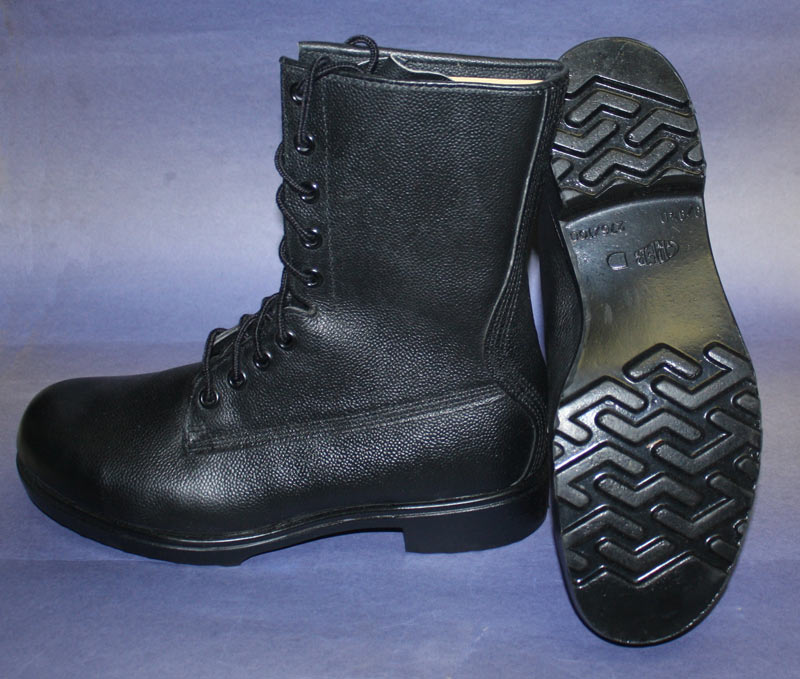
For years, Canadian soldiers have complained about their army-issued footwear. It was so bad that many claimed to have bought their own. Since 2018, military members have been reimbursed up to $340 a year, depending on their branch of service.
“With regard to the Mark III [boot], might as well just have a couple of hockey pucks…taped to your feet,” said Dominic Turgeon, a retired combat engineer now living in Edmonton.
The military struggled to find a replacement for the Mark III, paying the cost of orthotics for those who needed them before introducing the boot reimbursement program. Many soldiers complained the Mark III’s successors were not as good.
“Every boot the army has come out with since the Mark III has been worse than the last,” said Afghanistan veteran Andrew Brown.Now Public Services and Procurement Canada has awarded a contract worth almost $7 million to manufacturer Royer of Lac-Drolet, Que., to produce new general-purpose combat boots for the Canadian Armed Forces.
The company is to deliver 40,000 pairs of boots and 100,000 pairs of nylon laces to military supply depots in Montreal and Edmonton by February 2023.
“The general‑purpose boots are designed to provide enhanced foot protection and comfort for Canadian troops during operations conducted in ambient temperatures ranging from 0°C to 25°C,” said an Aug. 3 news release.
Under terms of the contract, the military will be able to order an additional 67,500 pairs over five years, bringing the total to a potential 107,500. Soldiers, meanwhile, can continue to buy their own footwear and be reimbursed for it.

“By the time I got out in 2013 you could wear anything as long as they were black and had 13 holes.”
The procurement announcement and a query by Legion Magazine sparked a wide range of conflicting opinions and observations about military-issue boots on the Canadian Afghanistan War Veterans Association Facebook page.
“I was meant to have Mark IIIs,” wrote Mark Verrall, a retired medic who served multiple Afghanistan tours with 3rd Battalion, Princess Patricia’s Canadian Light Infantry, when there was no allowance for personal boots.
“I could take them brand new out of the box and do a ruck march, no issues. I got a pair of Danner Fort Lewis for winter field time. By the time I got out in 2013 you could wear anything as long as they were black and had 13 holes.”

“Most of us at that time bought Danners. They later came out with the Mark IVs and wet weather boots which were horrible foot manglers. I pretty much bought and used my own S.W.A.T.s or Bates since about 2004.”
Wes Arscott had two pairs of Vibram-soled Mark IIIs around 2003, and they remained his boot of choice until he left the military in 2013—but not on deployment.
“When I deployed to Afghanistan I ended up buying my own boots. They were Converse. And they didn’t hold up that great. But as an ambulance crew commander they were fine.”
Afghanistan veteran Mike Sammy swore by the Mark IV.
“Overseas I got issued Boulet desert boots that I literally broke in with blood,” he wrote. “I ended up buying some S.W.A.T.s at the PX to save my feet. That was allowed.
“I had a pair of the Mark IVs. They were a huge improvement on the Mark III and those crappy wet weather boots. I got out in 2014 and we were still using the Mark IV.”

“Inferior to the Mark III in every way but warmth,” wrote Robert, who ran the Ironman race at Garrison Petawawa west of Ottawa in the Mark IIIs at least five times.
He said the fours were too heavy and had a wide “welt”—the piece of leather along the boot’s outsole attaching the upper to the sole—that tended to catch on things and trip up the wearer.
“The boot…is fine for walking on a perfectly flat surface, or for use as a ski boot,” wrote Robert. “Almost killed myself trying to break the things in on a hike, and generally avoided wearing them when climbing around armoured vehicles for fear of catching the welt on something and falling eight feet onto my face. They’re practically snowshoes.”
DK Waters bought his own boots when he was deployed to Afghanistan in 2006—S.W.A.T.s. He liked them, but each pair only lasted about 10 months. He switched up his boot choice when he joined the Royal Canadian Mounted Police.
“In 2012, when I was a member of the RCMP, I purchased a set of Hanwag Special Forces GTX and they have been the greatest boot I’ve ever worn,” he wrote. “The only down side is that they’re currently about $425-450 a pair.
“I’ve replaced the soles on them now two times and they just keep going. They’re a whole lotta beat up now and I’ll need a new set next summer.”

“Another waste of taxpayers’ money,” wrote Adam Hanna, adding that the reimbursement program is a better way to go. “We can buy boots that are comfortable, and actually last without all the bs.”
“Quit trying to reinvent the wheel with the lowest bidder and just buy something already proven and in production.”
Neither Robyn Murree, who’s been in for 19 years, nor Dustin Jeremy, who’s served for 15, have ever worn military-issue boots in the field.
Murree said the quest to issue a useful combat boot is useless.
“Quit trying to reinvent the wheel with the lowest bidder and just buy something already proven and in production,” he wrote.
Jeremy said he was disappointed by the procurement. “I hope the boot allowance doesn’t disappear anytime soon. It was the smartest decision they’ve made in awhile. I’ll just go back to buying them on my own dime.”
Advertisement













